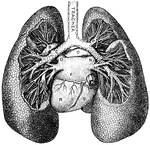Clipart tagged: ‘bronchi’
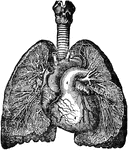
Bronchia and Veins of the Lungs
View of the bronchia and veins of the lungs, exposed by dissection, as well as the relative position…
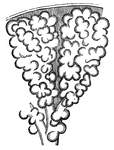
Bronchioles
This diagram shows the bronchial tubes, with clusters of cells. The bronchioles are the first airway…

Relative Position of the Heart and Lungs
A view of the bronchia and blood vessels of the lungs, as shown by dissection, as well as the relative…

Front View of the Cartilages of the Larynx, Trachea and Bronchi.
Front view of cartilages of larynx, trachea and Bronchi.
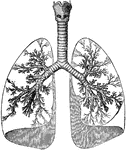
Lungs and Trachea
The lungs and windpipe (trachea). Labels: 1, larynx; 2, windpipe (trachea); 3, right lung, showing bronchi…

Mediastinal Surfaces of the Lungs
Mediastinal surfaces of the two lungs of a subject hardened by formalin injection. A, right lung. B,…

Back View of Respiratory Apparatus
Outline showing the general form of the larynx, trachea, and bronchi, as seen from behind. Labels: h,…

Front View of Respiratory Apparatus
Outline showing the general form of the larynx, trachea, and bronchi, as seen from front. Labels: h,…

Respiratory Mechanism
"The respiratory mechanism consists of the lungs, a series of minute air chambers with a network of…
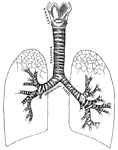
Respiratory system
"Larynx, trachea, and bronchi, showing the manner of division, and the rings of cartilage." —…
The Trachea of a Rook
"Bifurcation of trachea, and bronchi, viewed from below; a, pessulus, the bolt-bar, or "bone of divarication";…
